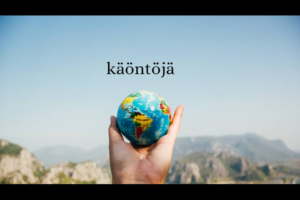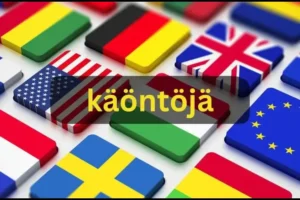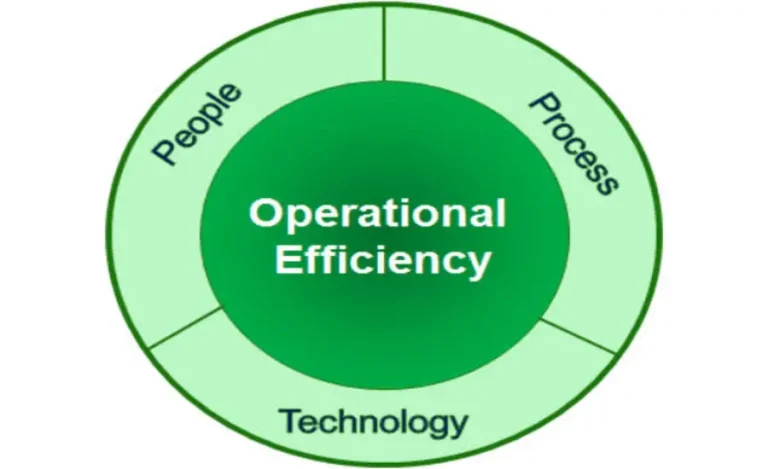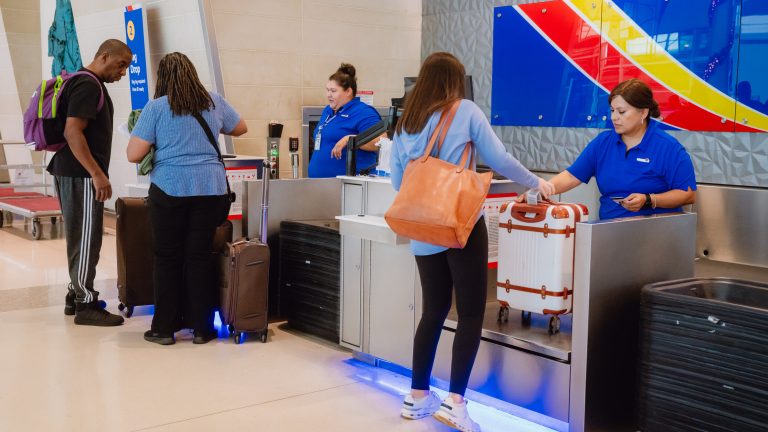Understanding Käöntöjä: A Comprehensive Guide
Introduction
In a world where communication is key to understanding and unity, the power of language cannot be underestimated. One language in particular, Käöntöjä, has emerged as a bridge that unites diverse cultures, fostering connections and celebrating differences. More than just words, Kaontoja embodies the essence of breaking down barriers and creating pathways of communication where differences are embraced and celebrated.
In fostering global connections, Kaontoja does not merely translate words; it translates thoughts, feelings, and aspirations. It champions the idea that in our diversity lies strength, and in our willingness to understand each other, lies the path to a united and prosperous global community. Through its practice, we are reminded of our shared humanity and the boundless potential that emerges when cultures converge, communicate, and collaborate.
Understanding Käöntöjä – More Than Just Translation
Käöntöjä represents a profound journey into the realm of linguistic artistry, transcending the basic act of translating words from one tongue to another. It’s a nuanced form of communication that weaves together the rich tapestries of cultural context, emotional resonance, and the intricate meanings that lie beneath the surface of language. In practicing Kaontoja, individuals embark on a deeper exploration into the heart of dialogue, uncovering layers of understanding that standard translation methods often overlook.
This linguistic approach emphasizes the importance of empathy and connection, enabling speakers and listeners to bridge not just linguistic but cultural divides. Kaontoja’s unique capacity to capture the subtleties of cultural expressions and idioms presents an opportunity for more authentic and meaningful interactions. It’s about honoring the spirit of the message, ensuring that the essence of the original communication is preserved and appreciated in its new linguistic form.
Through its focus on cultural nuances and emotional depth, Kaontoja challenges its practitioners to become not just bilingual but bicultural. It encourages an intellectual and emotional immersion into another culture, fostering a profound respect for diversity and a keen understanding of the way language shapes our perception of the world. This immersive experience does not merely change the way individuals communicate; it transforms how they connect, perceive, and interact with diverse cultures, enriching their personal and collective experiences.
Kaontoja, therefore, is not a straightforward task—it demands a commitment to ongoing learning, sensitivity to cultural contexts, and an openness to the evolving nature of language. By engaging with Kaontoja, practitioners and learners alike embark on a continuous journey of discovery, where each encounter with language is an opportunity to build deeper, more resonant connections across the vast landscape of human diversity.

The Role of Käöntöjä in Fostering Global Connections
Kaontoja emerges as an indispensable catalyst in the world’s march toward greater interconnectedness. Its role extends beyond the realm of mere language translation, diving into the depths of cultural nuances and the bridges built on mutual understanding and respect. In the fabric of our global community, it acts as a vibrant thread, weaving together the varied patterns of human experience and expression. This linguistic art form offers a unique platform where voices, regardless of their origin, are heard, understood, and valued, facilitating a richer, more inclusive dialogue among the world’s citizens.
Through the practice of Kaontoja, individuals and communities across the globe find common ground, despite the diversity of their backgrounds. It propels the exchange of ideas, traditions, and values in a manner that is respectful and cognizant of each culture’s identity and significance. This exchange is vital in a world that often finds itself divided by misunderstandings and preconceptions. By emphasizing the emotional and cultural layers of communication, Kaontoja enables a deeper level of empathy and insight, which is crucial for solving complex global challenges collaboratively.
Moreover, the advent of digital technologies has magnified Kaontoja’s impact, allowing it to transcend geographical boundaries with unprecedented ease. People from different corners of the world can engage with each other in real-time, sharing knowledge, and fostering partnerships that were once hindered by physical and linguistic barriers. This has opened up avenues for international cooperation, educational exchange programs, and cross-cultural projects that leverage the collective wisdom and creativity of diverse populations.
Celebrating Diversity Through Käöntöjä
Kaontoja is not just about language; it’s a vibrant celebration of the world’s rich tapestry of cultures. This linguistic phenomenon transcends mere communication, serving as a conduit for sharing and appreciating the myriad ways in which people express their identity, beliefs, and traditions. By embracing Kaontoja, we actively participate in a global festival of diversity, where each voice, regardless of its origin, adds a unique hue to the collective human experience.
The practice of Kaontoja encourages us to delve into the narratives and histories that have shaped different cultures. It opens our eyes to the beauty found in the variety of life’s expressions, from the simplest everyday customs to the most elaborate ceremonial traditions. In doing so, Kaontoja cultivates a deeper respect and admiration for the ways in which our differences can unite us, rather than divide us.
Through the lens of Kaontoja, we are invited to witness the world in its full spectrum of diversity. It challenges us to set aside our preconceptions and to approach each encounter with curiosity and openness. This approach not only enriches our understanding of others but also allows us to reflect on the diversity within ourselves. We begin to recognize the multitude of influences that shape our own identities, and how our personal stories are intertwined with the broader human narrative.
Kaontoja’s role in celebrating diversity extends beyond individual enlightenment. It acts as a catalyst for collective action, inspiring communities to come together in the spirit of mutual appreciation and respect. By facilitating dialogues that acknowledge and honor our varied backgrounds, Käöntöjä lays the groundwork for more harmonious and cohesive societies.

Kaontoja in Education: A Tool for Inclusive Learning
Embedding Kaontoja into the educational framework presents a transformative approach to learning, championing inclusivity and broadening horizons beyond traditional classroom boundaries. This linguistic philosophy goes beyond the acquisition of foreign language skills, inviting students to immerse themselves in the cultural underpinnings that shape linguistic expressions and dialogues. It opens a gateway for students to understand the world through the eyes of others, nurturing a generation that values empathy and cultural sensitivity as cornerstones of global citizenship.
Incorporating Kaontoja into lesson plans enables educators to craft an educational experience that is rich in diversity and connectivity. Through texts, multimedia, and interactive exchanges with peers from various backgrounds, students gain firsthand insight into the lives and traditions of people across the globe. This not only enhances linguistic proficiency but also cultivates an appreciation for the complexity and beauty of cultural differences.
Kaontoja-driven education encourages critical thinking and open-mindedness among students, prompting them to question stereotypes and embrace a more nuanced perspective of the world. This approach equips learners with the skills needed to navigate the complexities of our interconnected world, fostering effective communication and collaboration across cultural divides.
Furthermore, by highlighting the importance of context, idioms, and cultural references in communication, Kaontoja enriches students’ understanding of language as a living entity, deeply rooted in the human experience. This awareness builds a solid foundation for students to become adept at interpreting and expressing ideas in ways that are culturally and emotionally resonant.
The Impact of Technology on Kaontoja Practices
The digital revolution has significantly transformed Kaontoja, expanding its capabilities and the ease with which it reaches across the globe. The introduction of sophisticated communication tools, language learning apps, and online cultural exchange forums has created a fertile ground for Kaontoja to flourish in ways previously unimaginable. These technological advancements facilitate a seamless exchange of languages and cultures, enabling users to dive into immersive experiences from the comfort of their own homes or while on the move.
Technology’s role in enhancing Kaontoja practices is multifaceted. For instance, social media platforms provide a vibrant space for practitioners to share insights, engage in dialogue, and collaborate on projects that highlight the essence of Kaontoja. Furthermore, artificial intelligence and machine learning algorithms have begun to offer personalized learning experiences, adapting to the user’s pace and style of learning. This customization is key in understanding the nuanced aspects of language and culture that Kaontoja emphasizes.
Virtual reality (VR) and augmented reality (AR) technologies present another exciting frontier for Kaontoja. Through VR and AR, learners can virtually step into environments that epitomize the cultures they are studying, offering a depth of context that textbooks and traditional media cannot match. These immersive experiences are instrumental in fostering empathy and understanding, core principles of Kaontoja, by providing a firsthand look at life through different cultural lenses.
Online translation tools, while still imperfect, have also seen considerable improvements, assisting in breaking down initial barriers to communication. When used judiciously, these tools can complement Kaontoja practices by providing a starting point for deeper exploration and understanding of linguistic subtleties.

Challenges and Opportunities in Practicing Kaontoja
Practicing Kaontoja, while rewarding, presents a complex array of challenges that practitioners must skillfully navigate. The intricacies of accurately conveying not just the linguistic, but also the cultural and emotional weight of words, pose a significant challenge. Each language embeds within it a unique worldview, with idioms, humor, and cultural references that are often untranslatable. This demands from Kaontoja practitioners not only a deep linguistic proficiency but also an intimate understanding of the cultures they are bridging.
Moreover, the rapid evolution of languages and cultural norms adds another layer of complexity to practicing Kaontoja. Staying abreast of these changes requires constant learning and adaptation, ensuring that communication remains relevant and respectful. This endeavor, while daunting, is also a source of continual growth and learning for practitioners, enriching their own lives and the communities they touch.
On the flip side, these challenges pave the way for significant opportunities. They compel practitioners to engage deeply with different cultures, fostering a level of empathy and understanding that transcends mere language proficiency. This deep dive into diverse ways of life offers a richer, more nuanced view of the world, promoting greater inclusivity and appreciation for diversity.
Additionally, the growing demand for skilled Kaontoja practitioners opens up numerous professional and personal development opportunities. Thus, while the path of mastering Kaontoja is fraught with challenges, it is also one that leads to profound rewards, offering practitioners the chance to play a crucial role in shaping a more interconnected and empathetic world.
Kaontoja Success Stories: Real-world Examples
The transformative power of Kaontoja is illustrated through a myriad of success stories that span the globe, showcasing its role in enhancing understanding and cooperation among diverse communities. One such example is a multicultural festival organized in a metropolitan city, where participants from various backgrounds used Kaontoja to share their cultural heritages, languages, and traditions. This event not only fostered a deeper appreciation for diversity but also enabled attendees to form lasting bonds, transcending linguistic and cultural barriers.
In another instance, a non-profit organization utilized Kaontoja to facilitate dialogues between conflicting communities in a war-torn region. Through the careful translation of both language and cultural context, misunderstandings were clarified, and a common ground was established, paving the way for peace talks and reconciliation efforts. This example underscores Kaontoja’s potential to act as a catalyst for conflict resolution and social healing.
Educational institutions have also embraced Kaontoja, incorporating it into their curriculums to enrich students’ learning experiences. One notable case involved a university partnership program that connected students from different parts of the world through virtual exchanges. By engaging in Kaontoja-driven dialogues, students were able to explore each other’s cultures deeply, leading to enhanced cross-cultural understanding and collaboration on international projects. This initiative demonstrated how Kaontoja can be instrumental in preparing students to thrive in a globalized world.
The corporate sector has witnessed the benefits of Kaontoja as well, with multinational companies implementing training programs for their employees. These programs focus on cultural sensitivity and linguistic nuances, facilitating smoother operations and communications across international branches. Success in this arena highlights Kaontoja’s relevance not only in social and educational contexts but also within the global business landscape.
Final Words:
As educational institutions increasingly recognize the value of preparing students for a globalized society, Kaontoja emerges as a key pedagogical tool. It empowers educators to deliver a curriculum that is not only academically rigorous but also profoundly inclusive and reflective of the world’s diversity. Through Kaontoja, students are not just learning a language; they are learning to be thoughtful, informed, and compassionate members of the global community.
It reminds us that our diversity, when embraced and celebrated, is a wellspring of creativity, innovation, and strength. Engaging with Kaontoja thus becomes an act of unity, a way of weaving together the distinct threads of our experiences into a shared fabric of human connection, richer and more vibrant for its diversity.
The digital age, with its vast array of tools and platforms, empowers practitioners of Kaontoja to connect, share, and learn in innovative ways. As technology continues to evolve, so too will the methods and practices of Kaontoja, promising an ever more connected and culturally aware global society.
Each of these examples reflects the profound impact Kaontoja can have on bridging cultures and fostering connections. By facilitating a deeper understanding and appreciation of diverse perspectives, Kaontoja continues to prove itself as an invaluable tool in the quest for a more inclusive and interconnected world.







One Comment